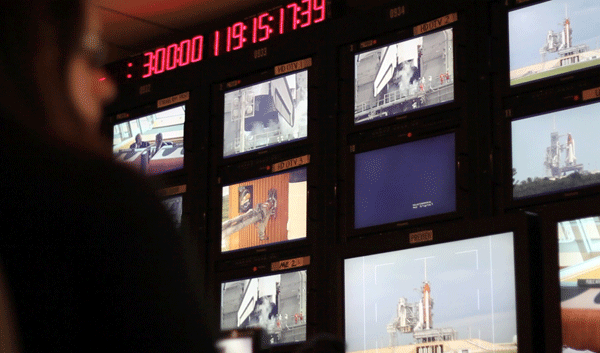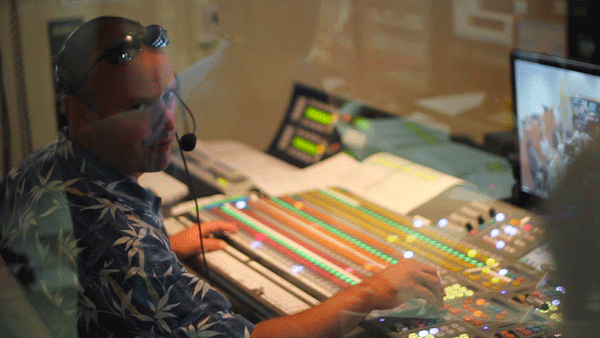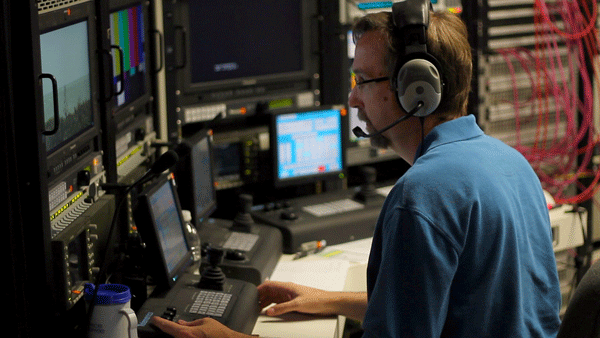Live at NASA TV for the Launch of Space Shuttle Endeavour
Anthony Burokas goes behind the scenes at NASA TV to shadow an event video crew that's responsible for bringing launches live to the world.
Crews
KSC TV crews are the same as operators you'd find anywhere else: camera operators, audio engineers, producers, directors, and the like. Their locations are very diverse, however. One is perched on top of the largest single-story non-urban building in the world, the Vehicle Assembly Building (VAB). Here, one camera is responsible for covering the journey of the astronauts as they travel to the shuttle on the day of launch, and, of course, the launch itself.
Many of the cameras closer to the shuttle are operated remotely, from a safe distance, by a crew housed in a NASA TV building. There is a dedicated team of remote camera operators/shaders who assess the various camera feeds as they are chosen to be used for the day's production. KSC TV can also choose to tap into 71 other camera angles that NASA uses as part of its launch assessment. Some of these camera angles provide very unique views, such as the wireless camera mounted on the nose of the external fuel tank of the shuttle. This camera looks down and can show any debris that may hit the bottom of the shuttle, and it also provides a great live view of the tank separation, some 348,300 feet above the earth.
Communication among the crews is paramount, but this is where you start to see the split between NASA Kennedy Space Center and NASA TV at headquarters in Washington D.C., which serves as sort of the central command for all the NASA centers.
KSC TV has its own internal production loop between the master control and engineering departments, audio control room, production control room, and field photographers. There is a separate communication line where KSC TV can speak directly to NASA TV headquarters. In fact, by using a line called PAO Queue, all the NASA centers can speak directly to one another in an instant without interruption of any live television production. The line is always available and the centers use it often for quick TV, video production, or other communications.

The KSC TV control room
While a launch countdown is underway, the producer, audio control tech, and director at KSC TV can speak directly to the launch commentator through a dedicated operational intercom system (OIS). This line is independent of the internal KSC TV production loop and PAO Queue. The audio control tech, director, and producer have access to all three of these communication systems during a live television show and sometimes all three are in use at once.

The KSC TV TD live-switching the show
The producer may be speaking with the launch commentator on the dedicated OIS line, answering questions from another center via the PAO Queue line and also monitoring the production staff using the internal production loop. To add more complexity to the internal communications during a live launch show, the producers are also listening to up to five channels of communication from the NASA engineers in the firing room such as the launch director, weather officer, and other NASA test directors.

A shader working in the KSC TC control room